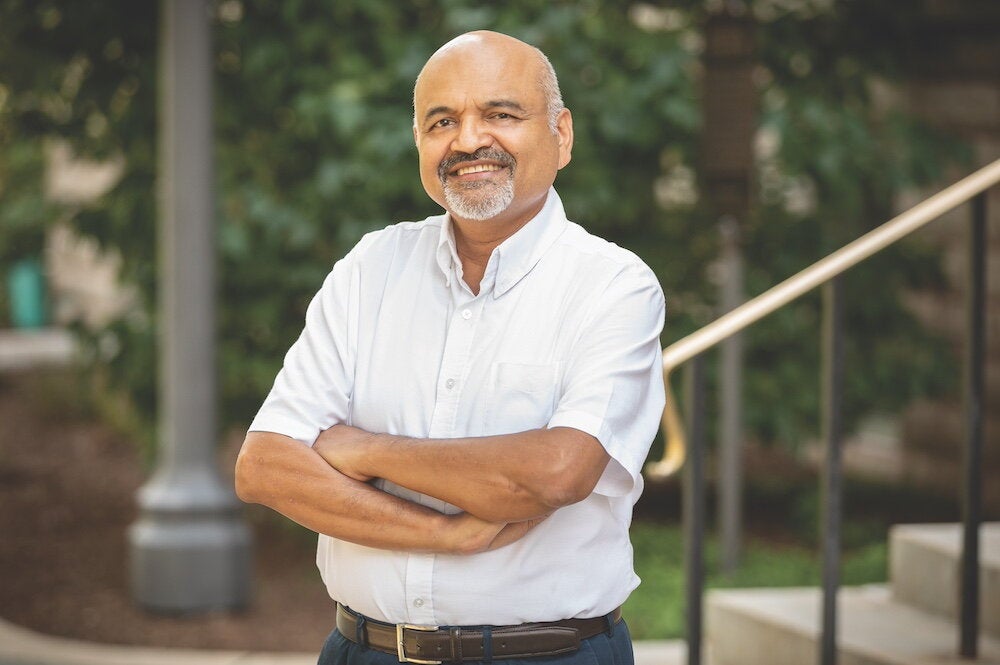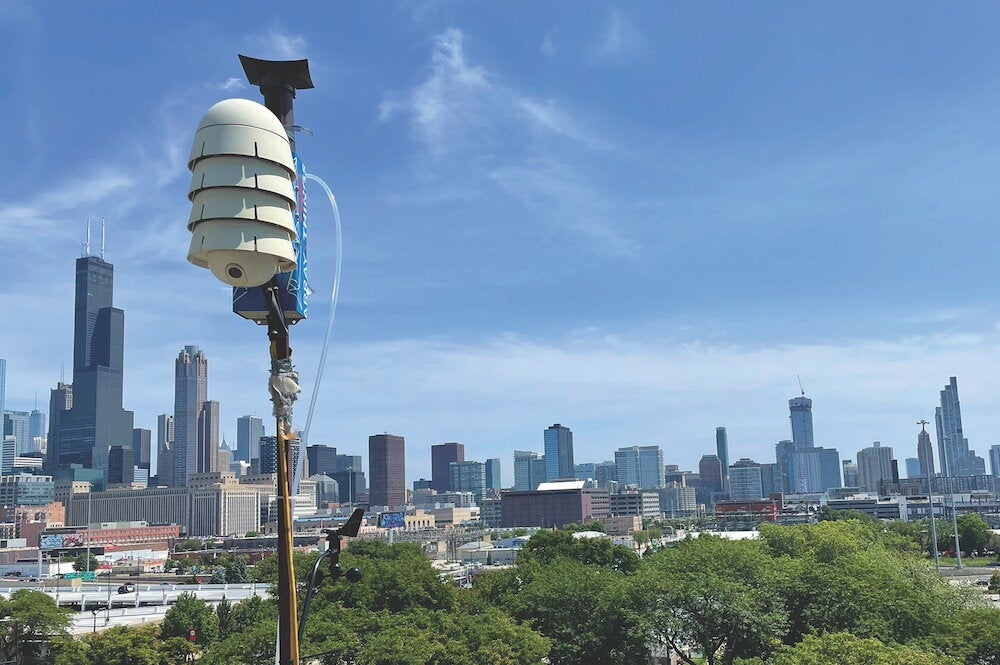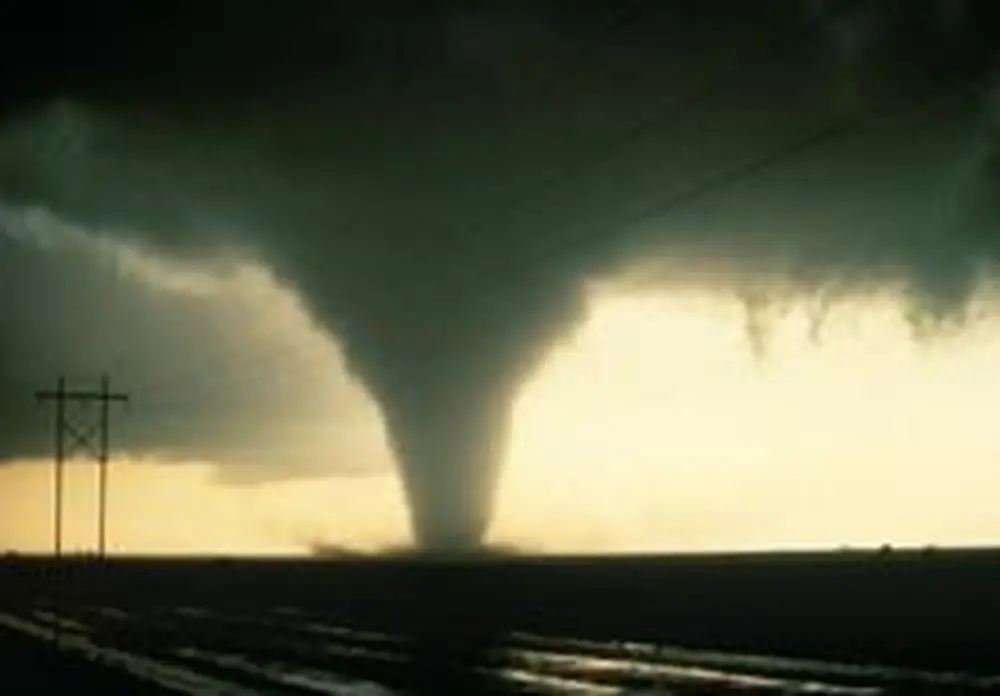
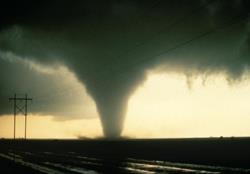
The next six weeks will be better than a journey to Oz for storm chaser and U of I meteorologist Glen Romine. Instead of riding a Kansas twister over the rainbow, he and graduate student Isaac Hankes are part of an international team of researchers—some coming from as far as Finland and Australia—that hopes to learn just what gives tornadoes their deadly twist.
From May 10 through June 13, Romine will be among the nearly 100 scientists who are being deployed across a 900-mile, kidney-bean-shaped swath of the U.S. Great Plains in the largest field experiment in history. Called VORTEX2, the project is deploying scientists in a fleet of 40-plus research vehicles to gather the kinds of data that may finally reveal why some thunderstorms turn tornadic and others do not. They are focusing on the nation’s storm-prone midsection—tornado alley—where cool dry air from the north collides with warm moist air from the gulf to produce more tornadoes a year than anywhere else in the world. May and early June are the most active months for storms.
Although severe storm researchers have made great strides over the past 40 years in dissecting the mechanics of these complex weather phenomena, many of the most subtle, and critical, details elude them. As scientists are discovering, tornadoes may be triggered by minute changes in conditions such as humidity, temperature, and wind speed near the base of thunderstorms.
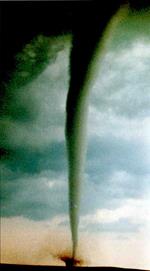
In the springs of 1994 and 1995, the National Oceanic and Atmospheric Association launched VORTEX, the predecessor of VORTEX2, to focus on measuring these “near-ground features.” They discovered that the likelihood of a tornado forming from a thunderstorm seemed to be linked with the character and behavior of downdrafts in the rear-flank of the storms. This insight and others resulted in significant advances in storm prediction. VORTEX2 will build on this research, getting even closer to the ground and with more precise measurements of the wind, temperature, and moisture than were possible 15 years ago.
“There appears to be a crucial layer of atmosphere within 10 to 30 meters above the ground that we can’t easily measure either from ground-based devices nor from airplanes to tell what is going on there, and that’s where we think crucial activity may be taking place,” says Romine. Using the full suite of instrumentation the VORTEX2 project aims to close this gap.
The scientists are divided into teams, with Romine’s group focusing on measuring raindrops to determine the size and amount of drops present within different areas of storms that do or do not produce tornadoes. Storm chasers and researchers have reported experiencing either mist or large raindrops near tornadoes, and Romine hopes to measure whether these differences may be related to the likelihood of a tornado occurring. Storms that produce significant tornadoes tend to have little cold air at the ground below them, which Romine thinks may be related to differences in the distribution of different-sized raindrops.
The mobility of the research team will be central to its success. “Basically, we are spending our days driving around,” says Romine. “We usually know the night before if conditions are promising, then we spend the next day refining a target area, ferrying, and then setting up our equipment so we can begin collecting data by about 5 p.m., when it is mature.”
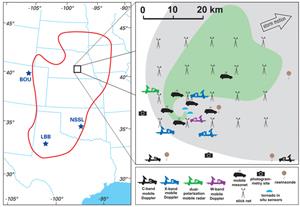
Upon reaching a storm, the teams arrange themselves around it to simultaneously collect measurements in unprecedented detail. Given the typical southwest to northeast trajectory of tornadic storms, most teams will be positioned to the south of the track of a tornado, where the light and the slow-moving nature of late spring storms will make for good visual observations. Some observations are also needed within storms, including those that Romine and Hankes will collect.
Of course, storm chasing is an unpredictable business. If lucky, the researchers will be able to track a dozen tornadic storms during the six weeks of the project. More likely will be three to four. The experiment will be repeated next to year to ensure the scientists collect sufficient data to improve storm prediction, especially to reduce fall alarms, says Romine.
“The goal is to boost detection rates—predicting which storms will produce tornadoes before they occur—from the current rate of 78 percent while substantially reducing the number of false alarms—tornado warnings when no tornado is observed—from 75 percent to 50 percent. That’d make a big difference. People would take warnings more seriously. It’d save lives.”
VORTEX2 is supported by the National Oceanic and Atmospheric Association and the National Science Foundation. Sixteen universities and academic organizations are participating in the landmark study.

